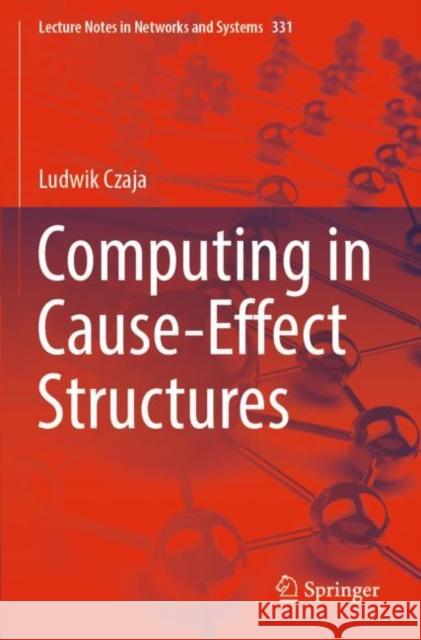Computing in Cause-Effect Structures » książka
Computing in Cause-Effect Structures
ISBN-13: 9783030888152 / Angielski / Miękka / 2022 / 172 str.
Computing in Cause-Effect Structures
ISBN-13: 9783030888152 / Angielski / Miękka / 2022 / 172 str.
(netto: 536,72 VAT: 5%)
Najniższa cena z 30 dni: 539,74
ok. 22 dni roboczych
Bez gwarancji dostawy przed świętami
Darmowa dostawa!
This book focuses on numerous examples of tasks represented by c-e structure. Cause–effect (c-e) structures are dynamic objects devised for algebraic and graphic description of realistic tasks. They constitute a formal system providing means to specify or implement (depending on degree of description generality) the tasks. They can be transformed, thus come under simplification, in accordance with rules-axioms of their algebra. Also, their properties can be inferred from the axioms. One objective of this book is presentation, by many realistic examples, of computing capability of c-e structures, without entering into mathematical details of their algebra. In particular, how computing with natural numbers and in propositional calculus can be performed by c-e structures and how to specify behavior of data structures. But also demonstration of many other tasks taken from the area of parallel processing, specified as c-e structures. Another objective is modelling or simulation by means of c-e structures, of other descriptive systems, devised for tasks from various fields. Also without formalizing by usage of functions between the systems. This concerns formalisms such as reaction systems, rough sets, Petri nets and CSP-like languages. Also on such, where temporal interdependence between actions matters. The presentation of examples is prevalently graphic, in the form of peculiar nets, but accompanied by their algebraic and set-theoretic expressions. A fairly complete exposition of concepts and properties of the algebra of cause-effect structures is in the previous book appeared in the Lecture Notes in Networks and Systems series. But basic notions of c-e structures are here provided for understanding the examples.
This book focuses on numerous examples of tasks represented by c-e structure. Cause–effect (c-e) structures are dynamic objects devised for algebraic and graphic description of realistic tasks. They constitute a formal system providing means to specify or implement (depending on degree of description generality) the tasks. They can be transformed, thus come under simplification, in accordance with rules-axioms of their algebra. Also, their properties can be inferred from the axioms. One objective of this book is presentation, by many realistic examples, of computing capability of c-e structures, without entering into mathematical details of their algebra. In particular, how computing with natural numbers and in propositional calculus can be performed by c-e structures and how to specify behavior of data structures. But also demonstration of many other tasks taken from the area of parallel processing, specified as c-e structures. Another objective is modelling or simulation by means of c-e structures, of other descriptive systems, devised for tasks from various fields. Also without formalizing by usage of functions between the systems. This concerns formalisms such as reaction systems, rough sets, Petri nets and CSP-like languages. Also on such, where temporal interdependence between actions matters. The presentation of examples is prevalently graphic, in the form of peculiar nets, but accompanied by their algebraic and set-theoretic expressions. A fairly complete exposition of concepts and properties of the algebra of cause-effect structures is in the previous book appeared in the Lecture Notes in Networks and Systems series. But basic notions of c-e structures are here provided for understanding the examples.











